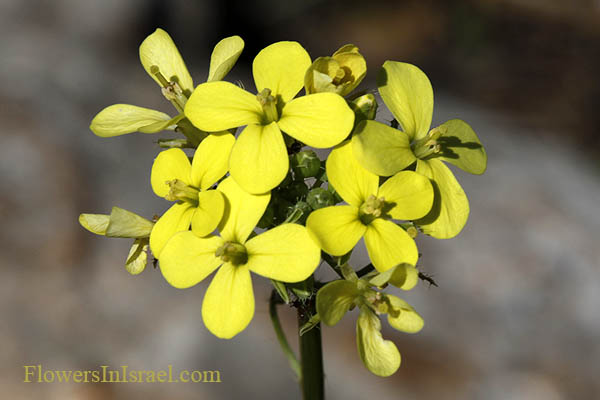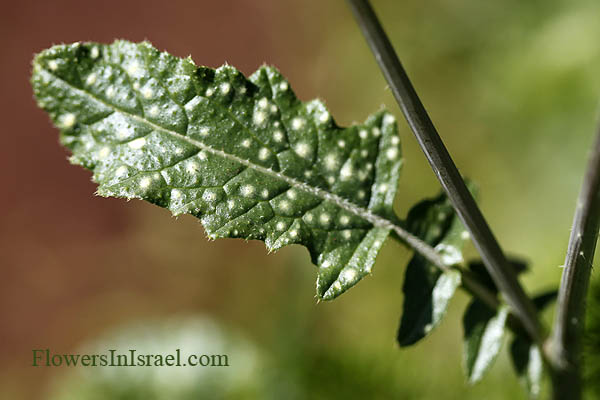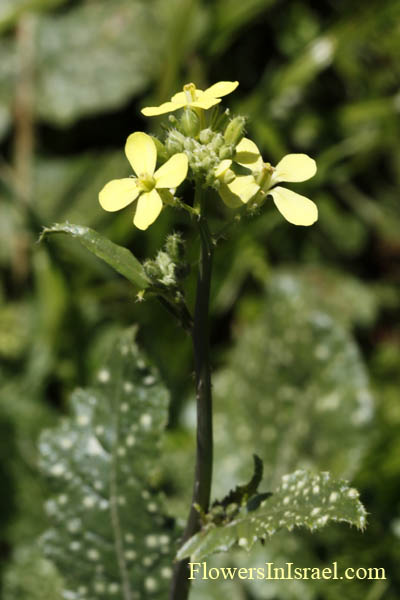Hebrew: צנון משתלשל, Arabic: دانه گرده، خردل زاگرسی
| Scientific name: | Quidproquo confusum Greuter & Burdet | |
| Synonym name: | Raphanus aucheri Boiss., Sinapis aucheri (Boiss.) O. E. Schulz | |
| Hebrew name: | צנון משתלשל | |
| Arabic name: | دانه گرده، خردل زاگرسی | |
| Family: | Cruciferae / Brassicaceae, מצליבים |

|
| Life form: | Annual | |
| Leaves: | Alternate, dissected, dentate or serrate | |
| Flowers: | Hermaphrodite, yellow | |
| Flowering Period: | February, March, April, May | |
| Habitat: | Batha, Phrygana | |
| Distribution: | Mediterranean Woodlands and Shrublands, Semi-steppe shrublands, Montane vegetation of Mt. Hermon | |
| Chorotype: | Med - Irano-Turanian | |
| Summer shedding: | Ephemeral |

Derivation of the botanical name: Quidproquo, “what for what,” “something for something," meaning a misunderstanding. confusum, confused; apt to be taken for another species. Raphanus, Greek raphanos, "quick-appearing" because of the rapid germination of the seeds. Sinapis, sinapi, Latin name for the mustard plant, from the flavor of the seeds. aucheri, named for Pierre Martin Rémi Aucher-Éloy (1792 – 1838), a French pharmacist and botanist. The Hebrew name: צנון, znon, radish (Probably so called because of its bad odor and related to Arabic: sunan ( = bad odor).]

|